Nine green dots in the vastness of the Atlantic Ocean, the Azores are currently considered one of the best places for whale-watching in the world. Located about halfway between Lisbon and New York, the Azores (map) are a volcanic group of islands that belong to Portugal. Its crystal-clear waters, the abundance of food, the absence of large scale pollution, and the legal protection provided to the cetaceans, make the Azores a real sanctuary for 24 different species. Whale-watching tours are available from the larger islands such as São Miguel, Terceira, São Jorge, Pico and Faial, making it a popular activity for visitors to these beautiful islands.


Which whales can be seen in the Azores
The most sighted are the sperm whale, sei whale, fin whale, pilot whale, mink whale, common dolphin, bottlenose dolphin, Atlantic spotted dolphin, striped dolphin, and Risso’s dolphin. I recommend joining a tour with marine biologists who can tell you a lot about these amazing creatures.
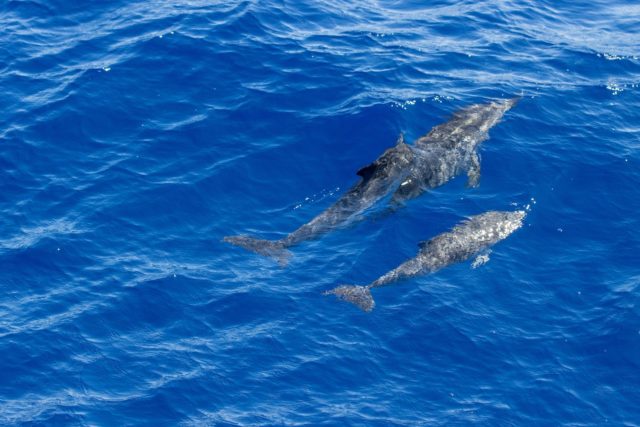
These animals can be seen in many places around the Azores but the waters around the islands of Pico and São Jorge are some of my favourite spots. It’s simply an amazing experience to be out in the middle of the Atlantic Ocean and to see a massive whale swim by gracefully against the backdrop of the magnificent conical peak of Pico or the awe-inspiring cliffs of São Jorge. Blue whales, humpback whales, orca’s, false orca’s, pigmy sperm whales and Northern bottlenose whales can sometimes be spotted passing through the channel that separates these islands. Join a Pico whale-watching tour with a marine biologist.
Best time to see whales in the Azores
The whale-watching season in the Azores lasts from April to October, though sperm whales can typically be spotted all year round. Different whale species can be spotted in the Azores depending on the time of year. The larger whales such as blue whales can be seen in April-May whilst humpbacks are easier to spot in October.
Check out this 7-day ‘Highlights of the Azores‘ tour
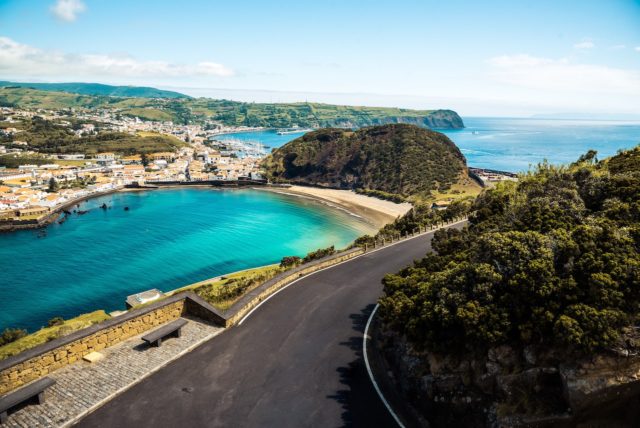
Sperm whales in the Azores
The sperm whale is one of the largest cetaceans currently in existence. The average size of adult females ranges from 11 to 12 meters long. Male sperm whales can reach 15 to 18 meters in length. There is a resident sperm whale population in the Azores, which can be sighted throughout the year.
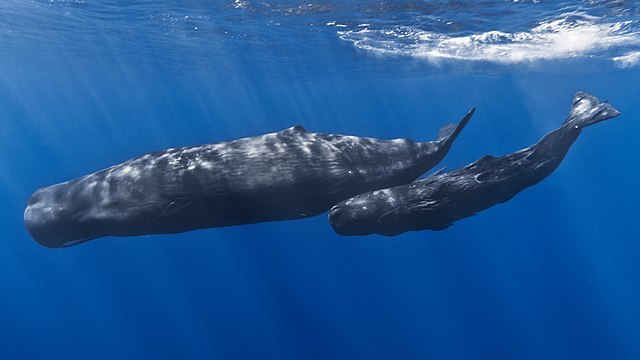
Females and calves live in reproduction groups of 20 to 25 individuals. Loners in general, or living in small groups of up to 6 individuals, the older males join the females and calves during the mating season, but just for a few hours. Holding the record for deep-diving, an adult male sperm whale is able to reach depths below 3000 meters (> 10,000 feet) and to be submersed for more than 2 hours. In these deep waters, they hunt for large squid which can also reach up to 18 meters in length. It must be a strange wild hunt in the dark – the scars on the skin of some sperm whales caused by the huge tentacles of large squid can often be spotted.
Sea turtles, sharks and flying fish are some of the other sea creatures often sighted during whale-watching trips around the Azores.

Hiking and whale-watching in the Azores
In addition to its diverse marine life, the Azores are also a haven for hikers. Whichever island you choose, you’ll find lush landscapes, gushing waterfalls, dramatic coastlines, country lanes with colourful hydrangeas and picturesque towns. I recommend combining a hiking trip with whale-watching on São Miguel, São Jorge, Pico and/or Faial. Check out this 8-day ‘Walking in the Azores‘ tour.
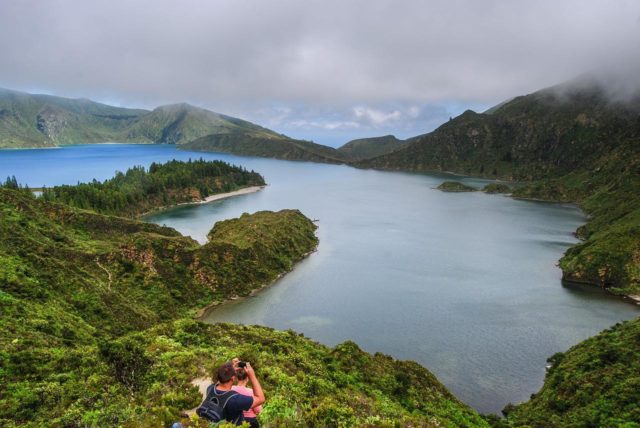
In short: the Azores is a must for adventurous nature lovers and avid whale-watchers. For more information on these magical islands in the Atlantic Ocean, please visit the website of Azores Tourism.
Tours in the Azores

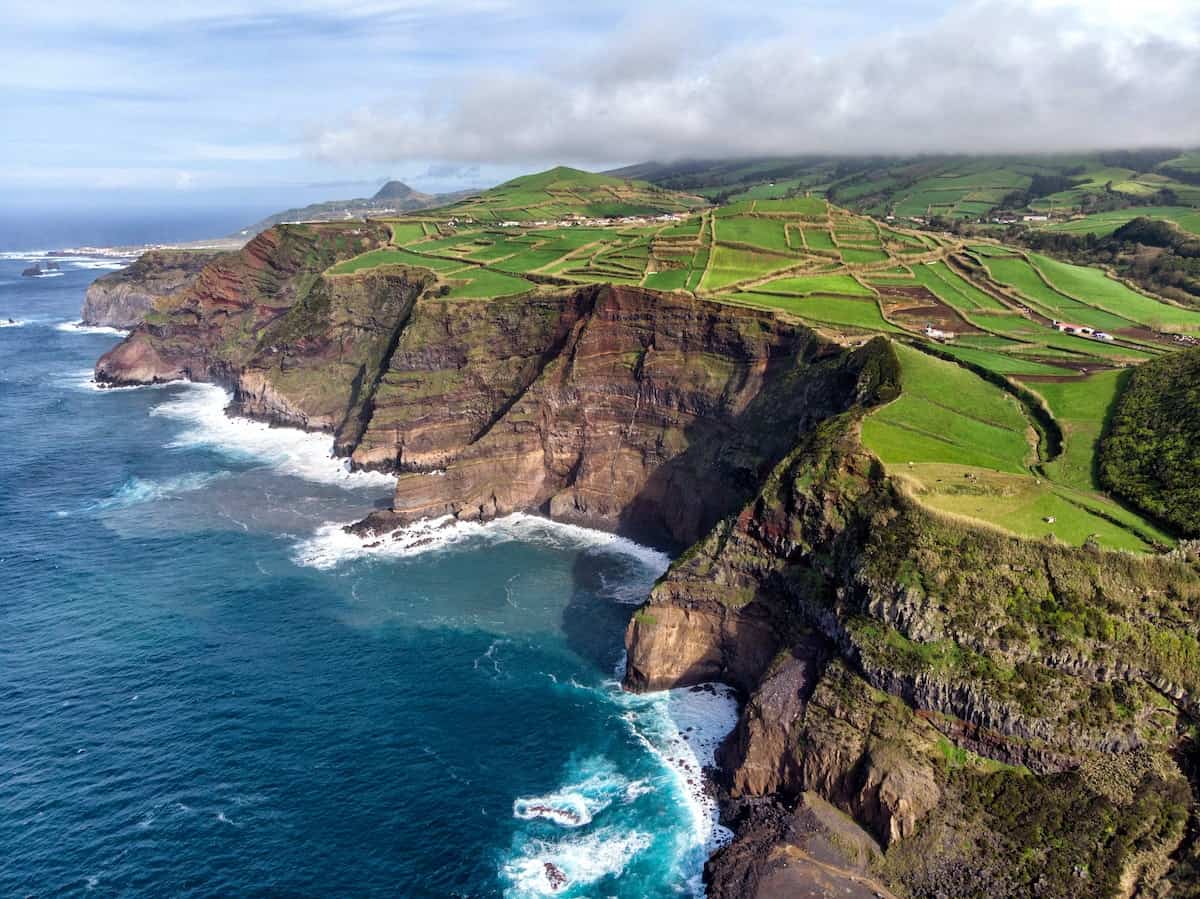
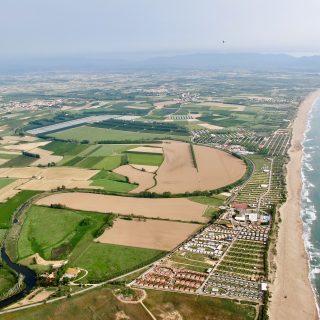









It’s definitely a great time for whale-watching. I once visited in June and spotted various types of whales and dolphins.
Have a great trip!
Keith
I am going to visit Sao Miguel in a couple of weeks and am seriously considering a whale watch tour. Sounds like it would be a good time of year for it.
Looks great! Going there in a few weeks!
Thank you for posting this. Very nice videos.
I would love to take a tour in the Azores someday.
Look us up if you guys visit Iceland.
Pico Island it’s the right place to experiment.
Thank you Rich, Gwen & Isabelle for your comments. I absolutely love the Azores. As Rich says, they’re remote while convenient and relatively inexpensive. The nature is awesome and a lot of the people speak English too. My favourite islands are Sao Jorge, Faial and Pico. Stunning places!
Cheers,
Keith
The Azores are amazing. Remote and isolated, while convenient and not-so-expensive.
Hey Keith
Are you there? I can hardly wait until I get back to the Azores. I am so very envious!
Tell us more about your experiences.
It`s great isn`t it?! I went whale watching in New England two years ago and this summer I saw wild dolphins doing tricks, it`s just an amazing experience!